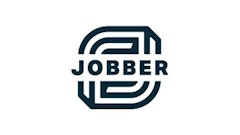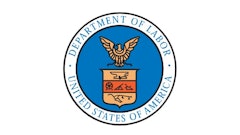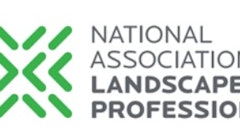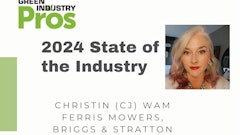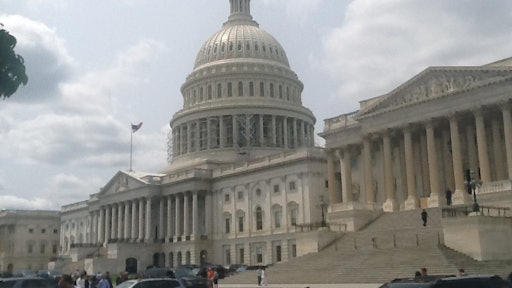
PLANET's annual Day on the Hill event pulls landscaping and lawn care industry stakeholders together for a day-long blitz of senators and representatives from across the country. This year's event, held July 29, saw roughly 110 professionals from 25 states come to Washington, D.C, to make sure legislators hear the Green Industry's collective voice.
For a look at what some Day on the Hill participants accomplished this year, check out Twitter, #landscapeadvocacy.
Tom Delaney, PLANET's director of government affairs, helps coordinate this annual event. Several key issues were on this year's agenda. Three in particular stirred a lot of passion from Green Industry professionals and legislators alike.
Clean Water
The EPA and U.S. Army Corps of Engineers have jointly released a proposed rule to clarify protection under the Clean Water Act for streams and wetlands. This proposed rule would greatly expand the scope of waters subject to regulation, possibly even including things like ditches and man-made water bodies such as lakes, ponds and fountains.
This proposed rule would greatly restrict a contractor's ability to utilize pesticides to control invasive weeds and disease-carrying insects and pests. A contractor's costs would also likely increase as a result of additional permitting requirements. Additionally, the proposed rule could also restrict a contractor's ability to install trees, grass and other plants.
PLANET supports H.R. 5078 and S. 2496, which would prohibit the EPA and Corps from implementing this proposed rule. Currently, 38 republicans and five democrats have signed onto H.R. 5078 while 37 republicans and no democrats have signed onto S. 2496.
This proposed rule was first published on April 21. The comment period has been extended and will be open until October 20. Visit Federal Register for more info.
ACA Employer Mandate
There have been numerous changes to the Affordable Care Act (ACA), aka ObamaCare, since it first became law in 2010. One such change was a delay of the employer mandate, which requires "large" employers with at least 50 full-time employees to offer health insurance to their full-time employees. That mandate is now set to finally kick in next year.
There are an estimated several thousand landscape and lawn care companies that fall into this category of Applicable Large Employer (ALE). But because of the seasonal nature of so many employees in the Green Industry, many more companies could also be affected by this mandate.
As it stands in the ACA now, there is a rather complex formula for determining how many full-time employees a given employer has. First of all, an employee is considered full-time when working at least 30 hours a week for a given month. Employers must then factor in all hours worked by part-time employees that same month in order to determine how many "full-time-equivalent" employees they have. That number is added to the number of full-time employees. If totaling 50 or more, the employer is considered an ALE.
The Green Industry faces a couple of challenges with respect to this complicated law. First of all, how do you factor in seasonal employees who work "full-time hours" for part of the year but then don't work at all another part of the year? Secondly, if an employer does prove to be an ALE after performing the calculation described in the above paragraph, to whom must the employer offer health insurance to? Must the employer offer health insurance to seasonal workers only working part of the year? To help navigate this rather murky area, another complex exercise is offered called the Look-back Measurement Method. All of this creates a lot of unnecessary confusion and cost for small-business owners such as landscape contractors.
On July 28, Representative Jim Renacci, R-OH, introduced an amendment to the ACA known as the STARS Act of 2014 (Simplifying Technical Aspects Regarding Seasonality), H.R. 5213. The STARS Act seeks to do two things: 1) define a "seasonal employee" as one who is employed on a seasonal basis for six months or less during the calendar year, and 2) exclude all seasonal workers from the complex ALE formula.
Some ardent proponents of the ACA might be concerned that H.R. 5213 is simply a means by which an employer can avoid offering health insurance coverage to certain workers. However, it might make more sense for a seasonal employee to obtain insurance on the health care exchange, allowing him or her to take advantage of subsidies which, in turn, could lower this individual's overall insurance costs. If an employer offers a minimal plan that is no better than what could be found on the exchange, the employee cannot take advantage of any subsidies. Thus, H.R. 5213 could prove to be a win-win for both the employer of seasonal employees and the seasonal employees themselves.
PLANET encourages Green Industry professionals to contact their local Congressional representatives to encourage them to support H.R. 5213.
Immigration and the Labor Pool
Staying on the topic of employees, hundreds if not thousands of Green Industry companies rely on the H-2B non-immigrant seasonal guest worker program in order to properly staff their companies during the busy landscaping season. The H-2B program has been under a lot of pressure over the past few years.
PLANET supports S. 744 (Border Security, Economic Opportunity, and Immigration Modernization Act) which passed in 2013 and includes a new "W" guest worker visa program. However, PLANET does encourage Congress to increase the number of visas available for these foreign temporary workers. Right now the number of W visas would be capped at 20,000 for the first year and up to 75,000 for the fourth year. With several other industries also vying for these visas, they would likely run out very quickly—as have the current H-2B visas which are capped at 66,000 per year.
As the landscape industry continues to strengthen and many companies look to expand and grow, it will be important for an adequate number of guest-worker visas to be available. That's why PLANET is also asking Congress to consider developing a formula for adjusting the number as economic demands dictate.
PLANET also encourages the House of Representatives to take up immigration reform legislation that addresses the guest worker issue. H.R. 4238 would amend the Immigration and Nationality Act to provide for requirements for employers of H-2B non-immigrants. For instance:
- A guest worker who wants to return to the U.S. the following year would not be counted toward that year's cap
- Employer must provide evidence that it attempted to recruit available, qualified, willing and able U.S. workers before hiring H-2B workers
- Employer cannot displace its U.S. workers by hiring H-2B workers, other than for good cause
- Employers cannot hire an H-2B worker to replace a U.S. worker who is on strike or locked out of employment due to a labor dispute
Wages paid to H-2B workers have been a big area of concern for the past couple of years. According to H.R. 4238, H-2B wages would be the greater of:
- Actual wage paid to other employees with similar experience and qualifications
- Prevailing wage level for that occupation and geographic area
With respect to determining prevailing wages, the proposed bill cites the following:
- A controlling collective bargaining agreement
- If no collective bargaining agreement exists, utilize the local, state or federal prevailing wage laws or ordinances for work governed by these ordinances
- If that doesn't apply, use a wage commensurate with the experience, training and supervision required for the job based on Bureau of Labor Statistics data, or conduct a legitimate private wage survey of the wages paid for such positions in the geographic area
To conduct a private wage survey, data must be collected during the two-year period immediately preceding the date of the H-2B petition. Additionally, the employer job description must be similar to the survey job description, the survey must be across industries that employ workers in the occupation, the wage determination must be based on a weighted or straight average of the relevant wages or the median of relevant wages, and the survey must identify a statistically valid methodology that was used to collect the data.
PLANET says it is vitally important that the Department of Labor preserves an employer's right to use legitimate private wage surveys. Additionally, any new proposed wage rule should include a multi-level wage methodology that provides for varying wage levels that are commensurate with the skill and training levels required for the position. H.R. 4238 appears to do just this.





